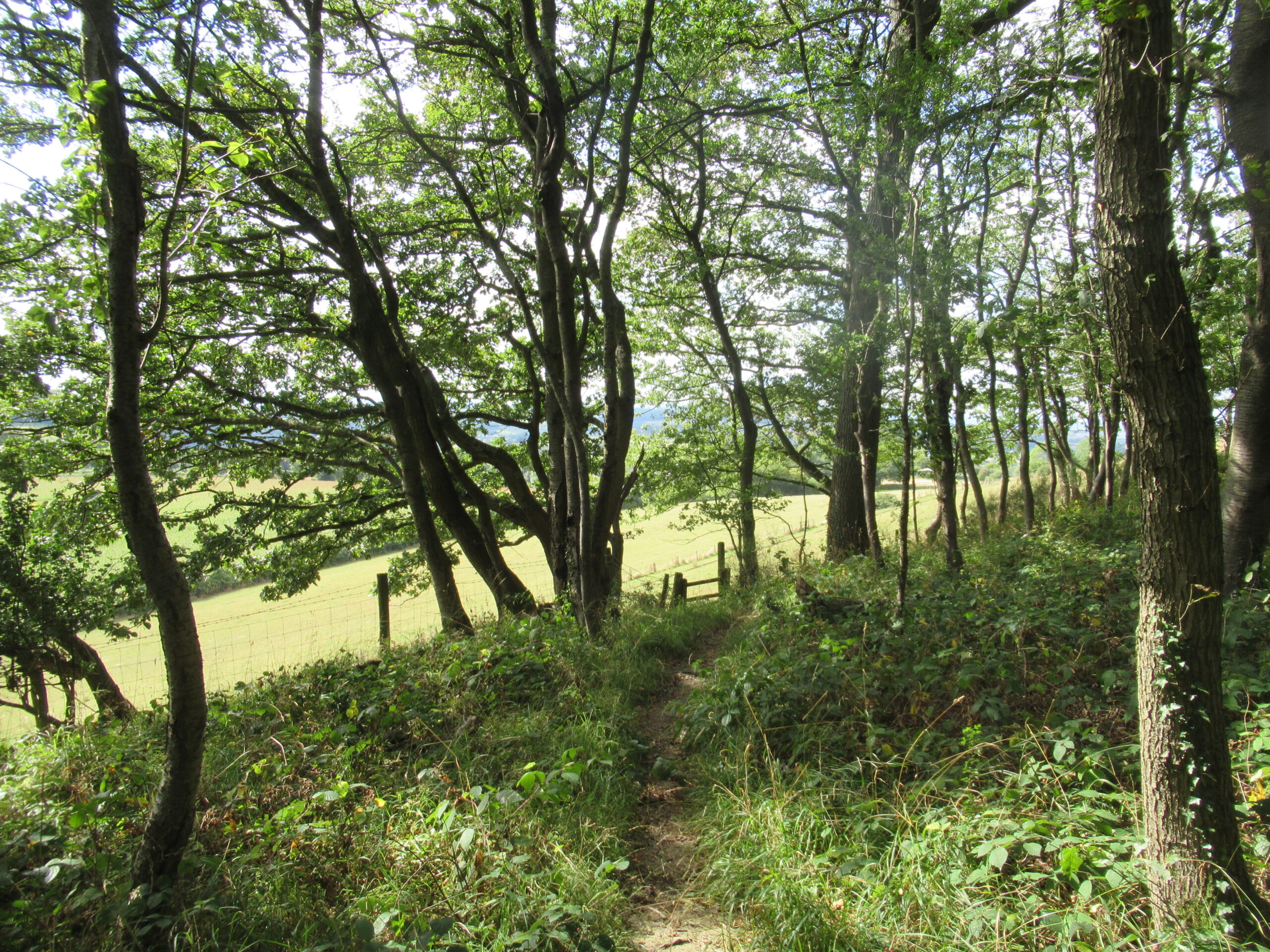Another fine day, that starts with cloud and opens up later to sun and breeze. No shops or pubs on today’s route, so we buy our vegan sausage rolls in Greggs and make our way down to the river, alongside a group of kayakers. Looking back from the river plain Ross stands handsome on its hill, defined by its tall-spired church, the Royal Hotel and the round pseudo-medieval sandstone tower, built in 1833 to add picturesque charm to the town.
Two women are sculling on the river, as we walk past the metal sculpture of flying geese towards the brutalist bridge that carries the noisy A40. This is Ross’s dog-walking zone, but we soon have the path to ourselves. It tracks the river for a couple of miles, with large fields to our right. On one of them a flock of Canada geese has settled on the stubble: they’re far enough away for us not to disturb them. Cows cool their legs in the river. On the other side the land slopes gently up, and above the flood plain are occasional farms and big houses. Somewhere along the way we stray from the Walk to the left and come across the great stone buttresses of Backney Bridge, that used to carry the Ross to Hereford railway line. They were built to last, a monument to Victorian confidence and optimism, but now stand isolated and useless.
We say hello to a lone walker, who turns out to be a walking encyclopaedia of local knowledge. He shows us how to find our way back to the Path, and tells us to watch out for a riverside monument to Rev. H St Helier Evans, who dived into the river to rescue two children in 1904. He rescued them but then died himself of a heart attack on the riverbank.
After these melancholy moments we rejoin the Path. A long flat stretch leads to a small suspension bridge across the Wye, Foy Bridge. The guidebook recommends a detour to visit the church of St Mary Foy – it fails to mention the connection with Peter Mandelson, Baron Mandelson of Foy – but we’re unconvinced and plod on. Pheasants begin to appear, always the ominous sign of shooter tourism. Hole-in-the-Wall, where we have our elevenses, is a pretty hamlet, but emptied to suit second-homers and summer lets. As we leave we offer our bench to the Couple from Chepstow, who’ve suddenly appeared. All this land belongs to the Perrystone Estate (‘we are 2 and a bit hours from London’), who have a habit of sprinkling threatening ‘do not’ notices around their property to discourage non-shooters. On a lane we meet a cortège of small wagons: one is transporting a group of shooters, and displayed on the back of another is a grizzly gibbet of slaughtered birds. Much further on, at How Caple, we can hear the guns firing.
Beyond How Caple we climb, then drop into Totnor, with its old blacksmith’s forge, and rise to Brockhampton, before lunch at a complex of sculptured benches at Caplor Lodge. Sure enough, the Couple from Chepstow come up behind us. This time we don’t yield our comfortable seats. Further on there’s another Iron Age hillfort. We walk between its two ramparts, descend, and then climb up to Paget’s Wood, owned by the Herefordshire Wildlife Trust. We stop just inside the entrance to the wood. It’s a magical moment. We’re far from the noise of traffic. Sun and a light breeze stream through the leaves, and below us there are views down across gentle hills and farms. Walking down through the broadleaf wood is just as uplifting. There’s one more climb to come, up to Common Hill, a limestone ridge that’s part of the Woolhope Dome. We descend it by Monument Hill, a lovely steep meadow, and follow a ridge through woodland to reach the road to Woolhope. Here we leave the Walk and drop into the village of Fownhope. Just along the main road is a famous pub, the Greenman, and we linger in the garden there with glasses of beer until it’s time for A. to leave us for home, and a taxi to take the three of us to our B&B in Hereford.
In the city we’re uncertain where to eat until we hit upon Ponte Vecchio, a small Italian restaurant not far from the Cathedral. The patrone, Leonardo, is as amiable and welcoming as you could wish, and the meal, we agree, is among the best Italian food we’d tasted for years.








Leave a Reply